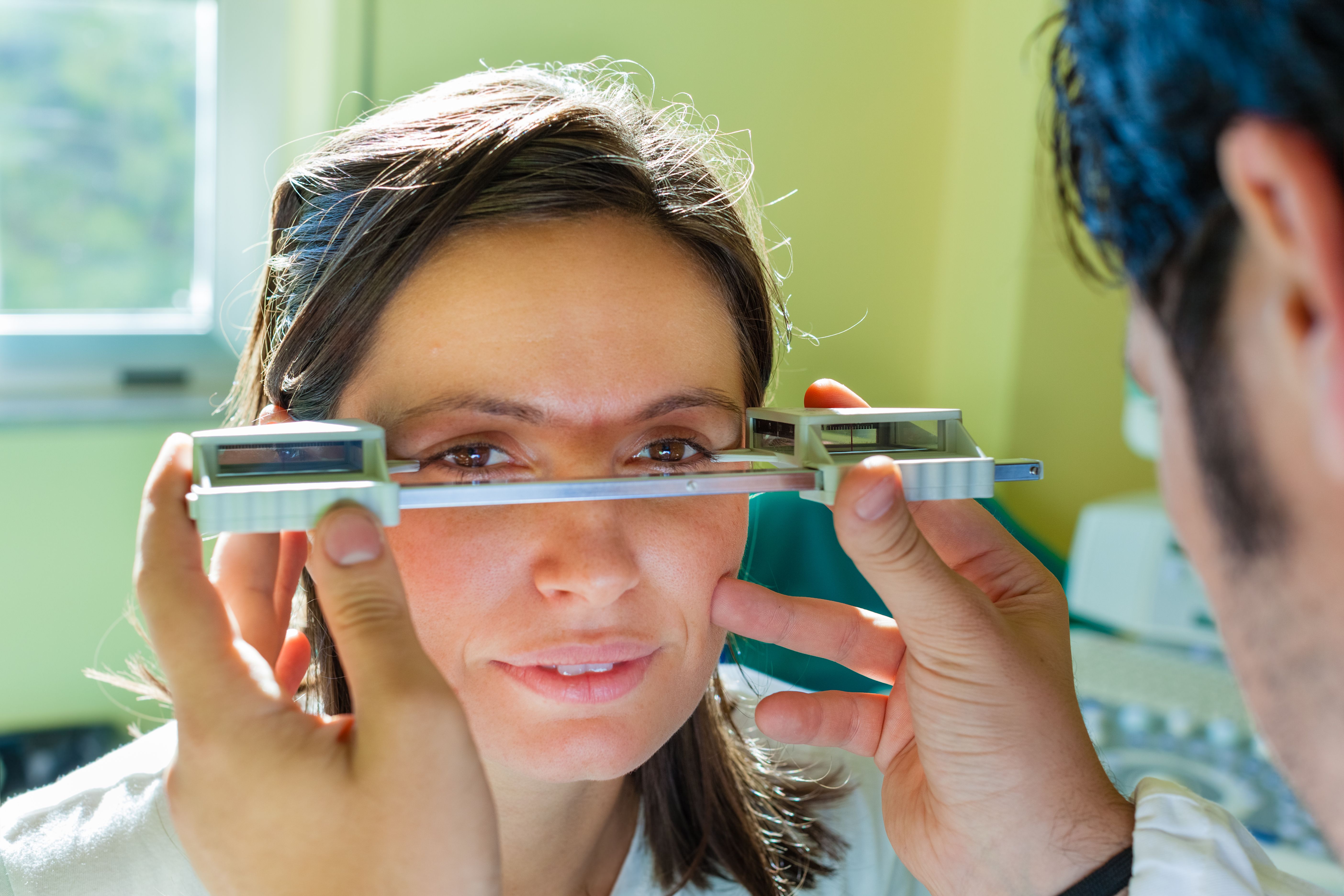IPhone Facial Recognition and an App Could Make for Fast, Easy, and Inexpensive Monitoring of Eyeball Protrusion in Graves’ Disease
Researchers in Switzlerland reported results from a small, proof-of-concept study in JAMA Ophthalmology that suggest an iPhone 11 and an app may be superior to traditional measurement with an Hertel exophthalmometer.
An iPhone 11 and a scanning app was more accurate than the traditional way of measuring eyeball protrusion, according to results reported today in JAMA Ophthalmology.A special high-resolution scanner was superior to the iPhone and app, but using it took more time and involved what the researchers called a “tedious and time-consuming” processing of scans that took about 30 minute per patient.
First author Todor Popov, M.D., of the University Hospital Zurich, and colleagues said their study supports the use of a smartphone instead of the traditional method that uses a device called an Hertel exophthalmometer, a device that was invented 100 years ago that uses prism mirrors.
The traditional way of measuring the protrusion of the eyeball has been with a Hertel exophthalmometer, which was invented more than 100 years ago. © Dario Lo Presti stock.adobe.com

Protruding eyeballs, or exophthalmos, is a symptom of Graves’ disease, an autoimmune disease that results in inflammation of the muscles and other tissues around the eyes. Swelling behind the eye sockets causes the eyes to bulge out. Other causes of exophthalmos include cancers and vascular problems that affect the area around the eye. Monitoring exophthalmos and how far the eyes are bulging out is routine part of the care of people with Graves’ disease.
Popov and colleagues recruited a total of 39 patients for this study, 23 with exophthalmos and 16 without it. Popov and two colleagues measured the study oar patient’s eyes with the three different methods of measurements. They used the iPhone 11’s TrueDepth camera, which is the camera that uses facial recognition to unlock the phone, and an app called Bellus3D FaceApp to get 3-D images of the face. They used a 2019 version of the MATLAB software to measure exophthalmos. The high-resolution face scanning was done an Artec Space Spider scanner. As with the iPhone images, the scanner’s model of the face was saved as geometry definition file (OBJ) and MATLAB software produced a measurement of eyeball protrusion.
With the results of the three different ways of measuring eyeball protrusion in hand,the researchers then set about to compared them. The high-resolution scanner showed the most accuracy and precision and was best in terms of interoperator reliability — the least amount of difference among the three examiner. The Hertel exophthalmometer had lowest interoperator reliability; Popov and colleagues said it may be difficult for examiners to learn to use it and that it may be prone to reading error. They noted that the high-resolution scanner and the iPhone have the advantage of being contactless, although they both involve marking the bony rims of the eye socket with a pen to detect their exact location on the scan. In the future, other reference points might be used, such as the bridge of the nose or the tragi of the ears, the researcher said.
The application they used is still experimental and not available for clinical use. Still, they wrote an enthusiastic conclusion, which said that “our smartphone scanning method may be readily available with little experience or special training needed for the examiner and likely takes less than a minute to record a patient.” With some future “refinement,” they said they hope the application with be approved for distribution on smartphones for clinical use and that it will also prove to be useful in clinical trials.
Briana Contreras, editor of Managed Healthcare Executive, spoke with Nancy Lurker, CEO and president of EyePoint Pharmaceuticals. Nancy shared a bit about EyePoint and how the organization’s innovative therapies are addressing patient needs through eye care, and most importantly, she addressed C-Suite positions like the CEO role. Nancy shared advice for those seeking to reach the CEO level, especially toward women in healthcare and other roles, and what it takes to run a biopharma company.
Listen
Researchers Gain Insight into Eye Side Effects of Blenrep
May 20th 2025A case analysis provides a new understanding of the ocular side effects of Blenrep, an antibody drug conjugate that is being reviewed by the FDA as a combination treatment for patients with multiple myeloma. The goal date is July 23, 2025.
Read More